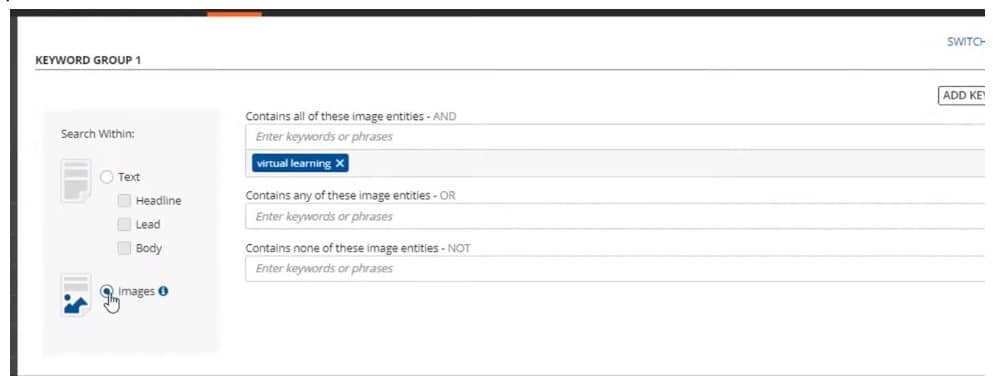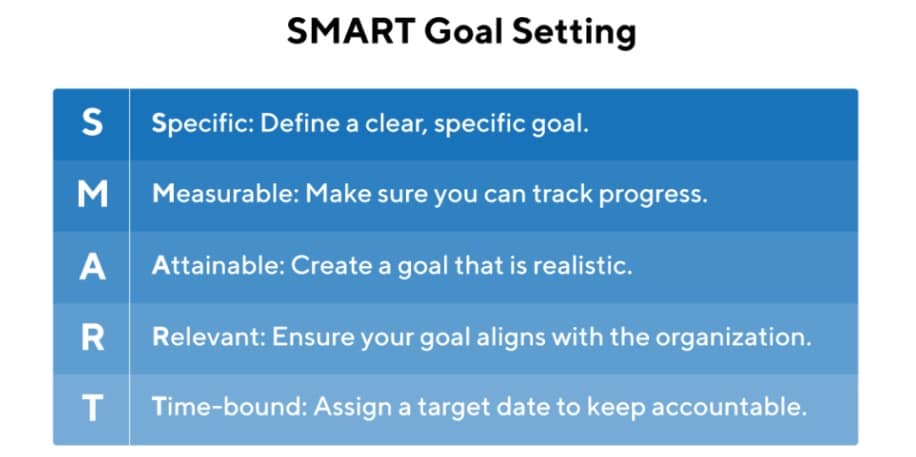Ninety five percent of customers trust well-regarded companies, showing how powerful a brand reputation management strategy is.
In this article, we will teach you a tested way to create a strategy to mold a positive brand image. We will also share effective tactics you can put into action.
By the end, you will be ready to amplify your reputation management efforts.
4 steps to creating a reputation management strategy
Highlight action points you can review and tweak to fit your business needs.
Step 1: Assess Your Current Brand Reputation
Do a brand assessment to see how your audience views you. Use it as your starting point to figure out what you are doing right and where you can improve.
To do this, review your customer feedback using Agility PR’s media monitoring tool. It covers every platform—social media, news, print, and blogs—unlike others that focus only on social media. Use this feature to get a more complete view of what is being said about your brand.
Then, filter the results by brand sentiment to easily categorize positive and negative reviews, making it easier to assess your current reputation.

Besides using reputation management software, employee feedback is also a goldmine since they interact with your customers daily and understand internal processes. Ask them what customers are saying and any common issues they notice.
You can conduct anonymous surveys to encourage them to also give their honest perception of your brand. If you have time, do one-on-one meetings to gather their feedback.
Step 2: Analyze The Data From Your Assessment
If you use Agility PR, it automates reports to give you a data breakdown. Use them to see where your mentions come from and whether they are positive, negative, or neutral. You can also easily share the charts with your team to make this step seamless and keep everyone in the loop.

But that is just an overview to help you draw general insights. To dig deeper, you can categorize the feedback into positive reviews and negative comments. Use the sentiment filter to segment your reviews and organize your data easily.
Then, look for patterns in each category. Sort it by themes or issues to make it easier to spot the trends.
For positive feedback, identify what your customers enjoy about your brand. Meanwhile, For negative comments, pinpoint recurring issues.
Create an action plan on how to acknowledge the latter and resolve the former to improve your brand perception (more on this later).
For the analysis, think about getting a virtual assistant. They can organize your data, spot patterns, and create custom reports. This way, you will have more time for big-picture tasks like product development.
Step 3: Develop Action Plans For Positive, Neutral, & Negative Feedback
Create specific tactics to handle different feedback types to prepare your company and team to manage your company’s reputation effectively. Use these action plans to maintain a positive brand reputation, improve the customer experience, and build an engaged online community.
Here’s how to create a strong reputation management strategy:
1) Assign A Team Member To Track & Reply To Comments & Reviews
This can be the likes of a social media manager, a customer service representative, or a dedicated review management team.
Choose someone who is detail-oriented and understands your brand’s voice. Also, it should be someone organized to make responding appropriately seamless.
Using Social Media Marketing Management Tools can further streamline the process by enabling efficient handling of feedback and ensuring prompt responses.
Here’s how you can do it for different feedback types:
Positive Feedback: Get a social media assistant since they are already engaged with your online community and can quickly spot praise.
Neutral Feedback: Assign a customer service representative who can identify comments that may need further clarification or additional information.
Negative Feedback: Designate a senior team member or PR specialist who can recognize brewing serious issues that may require immediate attention.
2) Identify Which Mentions Need Your Attention
In today’s world, trolls have somehow become a norm. This is not surprising, given that there are 2.9 billion active Facebook users and 368 million active Instagram users monthly. That is just 2 platforms, there are more. A portion of that is bound to cause some trouble.
These trolls want to spread negativity to harm your brand’s reputation without a genuine cause. So ignore those and focus on genuine feedback from real interactions, whether positive or negative.
Here’s what you should do:
- Identify genuine feedback: Genuine comments often include specific details about their interaction with your brand. Check their profile for authenticity—real profiles usually have a history of posts and interactions.
- Spot Fake Reviews: Troll comments often lack specific details and use overly negative language without substance. They might come from profiles with little to no activity or newly created accounts. Reviews that seem exaggeratedly negative or contain repetitive complaints across multiple accounts are also red flags.
- Prioritize Responses: If you can’t respond to every review, prioritize based on impact. Respond to customer questions first, then address specific complaints, and notice positive reviewers. Look for reviews that mention serious issues or high-impact comments from influential users.
Then, set response criteria:
Positive Feedback: Always thank and share to reinforce customer relationships.
- Example: Thank you for your kind words! We’re thrilled you loved our product. We’ll share your review with our team.
Neutral Feedback: Provide clarifications or additional information to make them understand your products or services more to push them closer to a purchase decision.
- Example: Hi Jane! Our blue printed shirt is available in XS, S, M, L, & XL. Feel free to contact us if you have any more questions.
Negative Feedback: Address complaints promptly to show commitment to improvement and maintain trust with existing and potential customers.
- Example: We apologize for the issue you experienced with the product quality. Please email us at support@ourcompany.com so we can offer you a replacement or a full refund.
3) Select Who Defines The Company’s Response To Issues
Choose a senior customer representative manager or PR specialist to define or outline how your company should respond to issues. They understand company policies and can craft well-informed responses based on that.
Once they define the types of responses, train your team to handle these issues effectively and know when to escalate to senior staff. For example, teach them to escalate complaints involving legal issues like safety violations or accusations of false advertising.
4) Make Use Of Positive Reviews
Highlight the strengths your customers point out to build a positive brand perception. You can also showcase customer satisfaction to build trust and attract potential buyers.
To do this, add a section on your homepage to show your glowing online reviews specifically. Use quotes and customer names to make them authentic.
Additionally, share positive comments on your social media accounts. You can create eye-catching posts with review snippets and tag satisfied customers. If you have newsletters, include monthly review highlights.
Another option is to add the reviews to your product pages. Show potential buyers real feedback to influence their purchase decisions.
5) Turn Neutral Reviews Into Positive Ones
Neutral reviews offer insights that can help you refine your services. So pay attention to them to show your commitment to constant improvement.
How do you do this?
Respond promptly and thank the reviewer for their feedback. Then, address the issues they mentioned and offer a discount or freebie as a gesture of goodwill.
For example, you run a local business selling donuts and you receive this: “The store had a decent flavor selection, but nothing stood out. It was an okay experience.”
You can reply with this:

If the review is vague, ask for more details to understand their encounters with your brand better. This shows you value their input and how you are willing to turn their experiences into positive ones.
Step 4: Monitor & Adapt
You can only have an effective reputation management strategy if you are consistent. So continue to monitor your brand reputation or the sentiment around it.
Use Agility PR’s “Topic Alerts” feature to make sure you are always updated when someone mentions your brand. You do not have to worry about the setup since the tool will walk you through it step-by-step, like this:
You can also use the “Coverage Alerts” feature to get email updates with results based on your chosen attributes, like this:

Additionally, use a spreadsheet to keep track of your progress. Include metrics like review scores, common feedback themes, and resolution times.
Meet with your team monthly to discuss the data. For example, if negative comments are up by 5 percent, identify the recurring issues. Are customers unhappy with a specific product or service? Discuss these patterns and brainstorm solutions to address them.
6 Must-Know Reputation Management Best Practices
Take note of how these best practices support your reputation strategy and plan with your team to implement it ASAP.
1) Be Proactive With Media Relations
Actively engage with journalists and media outlets not just when your brand image is in trouble. You should build relationships with them and share positive stories and updates about your company. This guarantees that positive news about your brand gets coverage to improve your public image.
In addition, use your good relationships with them to control the narrative when a problem does arise. For example, let’s say a product recall happens. Your trusted journalists are more likely to share your side of the story accurately and sympathetically. You can leverage this to minimize the negative impact.
What You Should Do
Build your contact from Agility PR’s Media Database. It lets you refine searches with advanced filtering options like media type and location to find the most relevant media contact.

Here’s how it works:
Agility PR Solutions – Media Database Tour

Use it to update your media list quarterly or 2x a year. Then, make sure to send them press releases, offer exclusive stories, or invite them to company events like product launches to help you build a positive brand image.
2) Use AI To Improve Your Customer Support
AI software can handle 70 percent of customer inquiries.
What does that mean for you?
You can guarantee quick and efficient customer interactions. Consumers expect brands to be responsive, and chatbots help meet this expectation with instant support, which strengthens your brand’s image and customer trust.
A great example of this is Sephora using its chatbot to give personalized product suggestions to users. With this, the company increases customer satisfaction and gets better brand perception.

What You Should Do
Use a platform like Intercom to integrate AI chatbots into your website. It can detect a customer’s language and trigger custom-language automation across 43 languages. This makes your brand more accessible and user-friendly to a global audience.
Here’s how you can use and build it:
AI-first customers service with Intercom

Use it to build a strong brand reputation as a company that is inclusive and exceeds customer expectations.
3) Engage With Your Online Community
Your communication with your target audience should not just be limited to replying to their feedback and being done for the day. Participate or start conversations, share valuable content, and show interest in what your audience cares about.
What You Should Do
Ask questions. Here’s an example from Netflix:

Questions encourage your audience to respond and they spark a fun back-and-forth. Take a cue from Netflix and ask questions you know will get humorous answers. It is a fantastic way to build an online community because it gets people talking, laughing, and sharing, which strengthens their connection to your brand.
You can also host live events like Q&A sessions on Facebook, Instagram, or X. Use this as a chance to show your target audience that you value their input and are willing to face them and not hide behind a logo. Plus, this is a way for you to grow your social media presence.
Plus, you can share content that addresses your audience’s interests and needs. So create blog posts, how-to videos, and infographics to highlight your products or services. Use these to make your brand easy to understand and connect with.
Lastly, if you have the resources, create a community website where customers can connect, share experiences, and access exclusive content. Use this to create a sense of belonging for your customers while strengthening your brand’s online reputation.
4) Establish Yourself As A Thought Leader
Become a go-to expert in your industry. Share your knowledge and insights to influence others and drive discussions on industry trends.
Why is this good for reputation management?
You can leverage it to build trust, authority, and credibility. But be consistent when sharing valuable insights to improve your brand visibility on search engines. It can earn you backlinks from reputable sources.
What You Should Do
Identify your industry trends. To do this, use Google Trends to look up keywords related to your industry and see what is currently buzzing.
For example, let’s say you sell eco-friendly products. Input keywords like “eco-friendly” into Google Trends, and you will get results like this:

From the list, you can see there is currently a significant interest in eco-friendly packaging and supply chains. With that, you can write an article like “How to Transition to a Sustainable Supply Chain: Best Practices and Benefits.”
Use the piece to address concerns, provide answers, help other businesses, and position your company as a knowledgeable voice in sustainable practices.
Besides articles, speak at industry events, like webinars or panel discussions, to share your knowledge. This will be good for networking and can help you collaborate with other experts. You can do joint projects or co-authored content to expand your reach and credibility.
5) Develop A Corporate Social Responsibility (CSR)
Create initiatives that benefit the society and environment. Take this as an opportunity to give back to the community while improving your organization’s reputation.
Additionally, consumers appreciate brands that care about more than just profits. The positive brand mentions from your CSR activity can improve your visibility and goodwill.
Ikea is a great example of a company with strong CSR backed by concrete actions:
IKEA Sustainability Report FY21 highlights

Its sustainability action plans include:
- Reducing carbon emissions.
- Using renewable and recycled materials.
- Offering repair and recycling services to promote circularity.
They keep sustainable products affordable to encourage their customers to make green choices.
Does it help their brand reputation? Well, considering around 860 million customers went to Ikea stores in 2023 alone, it is clear that their commitment to sustainability appeals to consumers.
What You Should Do
First, identify your core values. Reflect on what your company stands for. What principles guide your business decisions?
For example, if your company is in the food industry and values health and community, focus on initiatives like promoting healthy eating and supporting local food banks. This guarantees your CSR aligns with your mission.
You should also send surveys to your staff to learn what they value the most. If you find that they are passionate about reducing plastic waste, use that as one of your CSR initiatives.
Next, set clear CSR goals using the SMART framework:

Here’s an example goal:
- Our goal is to reduce our plastic waste by 20% within the next 12 months by implementing office recycling programs and switching to biodegradable packaging for all products. We will measure progress monthly by tracking the amount of recycled and biodegradable materials used.
Here’s the SMART breakdown:

Then, it is time to engage your employees. Involve them in planning and executing CSR initiatives. Use this to boost their morale and encourage a collective effort.
Also, work with local businesses and organizations for greater impact. For example, if you have a restaurant, collaborate with local farms to source organic produce.
Then, share your CSR activities through social media, newsletters, and your website. Highlight the communities, the tangible results, and your plans to continue moving forward.
To help you with this, you can hire interns to bring new energy and ideas to your CSR initiatives. These Gen Z’s are keen to create positive change and can invigorate your projects. Plus, an internship program can let you strengthen social responsibility and volunteerism among the youth, which is another way to give back to society.
6) Implement A Proactive Crisis Management Plan
Prepare for potential problems that can deter your overall brand online reputation management strategy. A plan lets you respond quickly and effectively to minimize any damage to your brand. Plus, you can use this to be in control of the narrative during tough times.
What You Should Do
Outline predefined roles and responses for different types of crises. To do this, list possible crises your company may face, including product recalls, software bugs, or PR scandals.
Then, assign specific roles to team members for each critical function during a crisis. For example:
- Legal Advisor: Gives guidance for legal implications and approves public statements.
- Spokesperson: Handles all media communications and public statements.
- Crisis Manager: Coordinates the overall response and ensures the plan is followed.
In addition, gather your team to develop pre-written but customizable statements and responses for different types of crises. For example, let’s say you have a PR scandal. Here’s what you can say:

You should also create a checklist of actions to take during a crisis. Include steps like verifying the facts, notifying stakeholders, and monitoring the situation continuously.
Lastly, hold crisis response drills at least once every quarter to train your team. Simulate different crisis scenarios to test your plan’s effectiveness and make adjustments as needed.
Ready to amplify your reputation manag
Conclusion
ement strategy? The next step is to brainstorm with your team to tweak the action plans we gave based on your business. Then, discuss which tactic you should prioritize this year.
Remember, in the PR industry, effective reputation management strategies amplify your messaging. They let you build stronger customer and media relationships.
To make maintaining your brand reputation easier, use Agility PR’s solutions. Feel the public pulse on your brand and services, all while keeping your media list just a click away. Book a demo now and be on your customer’s good side.



